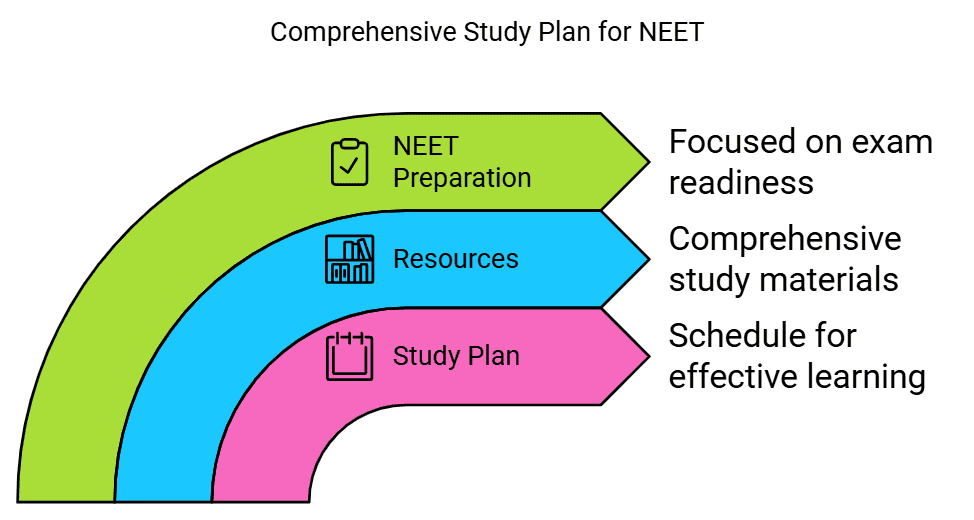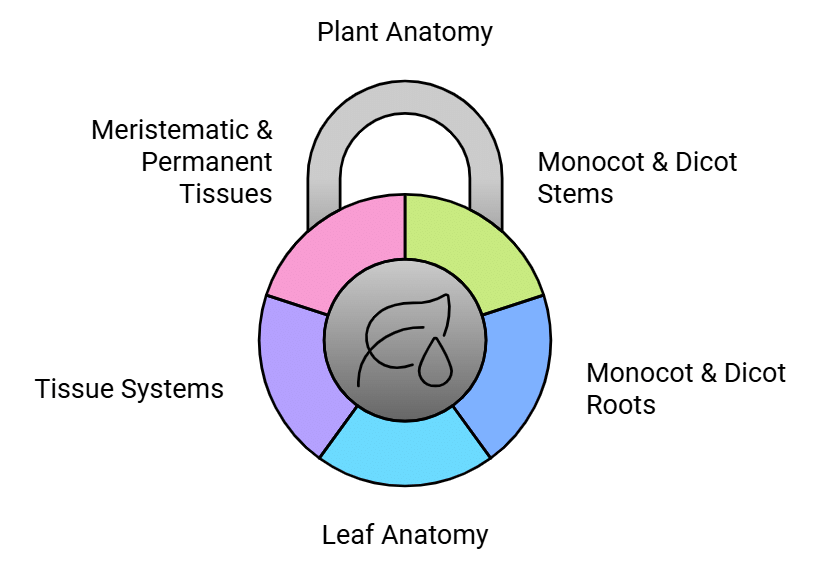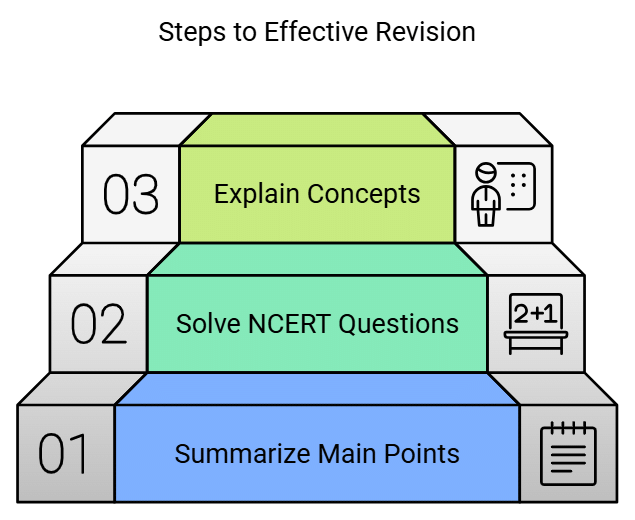4 Days Study Plan: Anatomy of Flowering Plants | Biology Class 11 - NEET PDF Download

Let's explore the Biology chapter called "Anatomy of Flowering Plants" and how it's important for the NEET exam. By studying the past years NEET questions (from 2016 to 2025), we can see that this chapter is really important in the exam. If you want to score well in NEET, you need to understand the concepts in this chapter.
Meeting Your Timetable Goals with EduRev!
The study plan for this chapter offers you a schedule to manage your time effectively for learning and practicing the chapter thoroughly. By following this plan diligently, you'll be well-prepared to tackle even the most challenging questions asked in NEET related to each chapter. EduRev makes your preparation easier and saves you time by providing comprehensive resources for each topic. These resources include chapter notes, videos, and tests for every topic and chapter.
To access these valuable resources, including documents, videos, and tests, simply click here.

Importance of the Chapter
This chapter provides a deep insight into the internal structure of plants, encompassing the anatomy of stems, roots, leaves, and various plant tissues. A strong grasp of this chapter is essential for comprehending plant physiology and other advanced biology topics. Moreover, NEET frequently includes questions from this chapter.
Topics Covered in the Chapter
- Anatomy of Monocot & Dicot Stem
- Anatomy of Monocot & Dicot Root
- Anatomy of Leaf
- The Tissue System: Epidermal, Ground & Vascular
- Types & Characteristics of Meristematic Tissue
- Parenchyma: Permanent Tissues
- Complex Permanent Tissue
- Secondary Growth
Now, let's outline a 4-day study plan for this chapter:
Recommended Tip: Review the past year's questions related to this chapter. This will provide you with insights into the types of questions typically included in the exam and the level of detail you need to study. Getting a sneak peek ahead of time can be a game-changer!
Day 1: Anatomy of Monocot & Dicot Stem, Anatomy of Monocot & Dicot Root
What to Cover:
- Study the internal structure of monocot and dicot stems.
- Examine the anatomy of monocot and dicot roots.
Study Tips:
- Begin with the corresponding chapters in your NCERT textbook.
- Create labeled diagrams to understand the structure of stems and roots.
- Utilize EduRev's Mindmap for Anatomy of Flowering Plants for visual aid and clarity.
Day 2: Anatomy of Leaf, The Tissue System: Epidermal, Ground & Vascular
What to Cover:
- Explore leaf anatomy, including its different layers.
- Study the epidermal, ground, and vascular tissues.
Study Tips:
- Use your NCERT textbook to understand leaf structure thoroughly.
- Create a flowchart to differentiate between different tissue systems.
- Refer to EduRev's Important Notes for NEET for concise summaries.
Day 3: Types & Characteristics of Meristematic Tissue, Parenchyma: Permanent Tissues
What to Cover:
- Learn about meristematic tissues and their types.
- Explore the characteristics and functions of parenchyma tissues.
Study Tips:
- Make flashcards to remember the types of meristematic tissues.
- Understand the roles of parenchyma in plant physiology.
- Utilize EduRev's NCERT Solutions to reinforce your understanding.
Day 4: Complex Permanent Tissue, Secondary Growth, Revision
What to Cover:
- Study complex permanent tissues like collenchyma and sclerenchyma.
- Understand the concept of secondary growth in plants.
Study Tips:
- Use visual aids like diagrams from your NCERT textbook.
- Watch educational videos or animations to comprehend secondary growth.
- For revision, revisit your notes, diagrams, and key definitions.

How to Revise
- Summarize the main points from each topic.
- Solve questions from your NCERT textbook for practice.
- Ensure you can explain the concepts to someone else, which will reinforce your understanding.
In the NEET exam, you'll encounter questions like the ones mentioned in below links. The best way to review and get better at the topics is to solve the questions. If you find a question tricky, it's a sign that you might not fully grasp that topic. In that case, it's a good idea to revisit the topic and study it again and solve more and more questions related to it.
- NEET Previous Year Questions(2016-23): Anatomy of Flowering Plants
- NCERT Based Tests
- Revision Notes: Anatomy of Flowering Plant
- Short & Long Answer type Questions
- Topic Wise tests
- Important Notes for NEET: Anatomy of Flowering Plants
Remember, throughout your study plan, refer to the NEET Exam page for updates on exam patterns and trends. Stay consistent.
Here are all the important links and topic links for the chapter:
- NEET Exam
- NEET Previous Year Questions (2016-23): Anatomy of Flowering Plants
- Mindmap: Anatomy of Flowering Plants
- Important Notes for NEET
- NCERT Textbook: Anatomy of Flowering Plants
- NCERT Solutions: Anatomy of Flowering Plants
- Chapter Link
- Anatomy of Monocot & Dicot Stem
- Anatomy of Monocot & Dicot Root
- Anatomy of Leaf
- The Tissue System: Epidermal, Ground & Vascular
- Types & Characteristics of Meristematic Tissue
- Parenchyma: Permanent Tissues
- Complex Permanent Tissue
- Secondary Growth
In conclusion, the chapter "Anatomy of Flowering Plants" in Class 11 Biology is undeniably crucial for NEET exam preparation, as it holds significant weightage in the examination. The comprehensive understanding of plant anatomy, including stems, roots, leaves, and various tissue systems, is vital not only for excelling in the exam but also for building a strong foundation in plant physiology and biology as a whole.
|
150 videos|399 docs|136 tests
|
FAQs on 4 Days Study Plan: Anatomy of Flowering Plants - Biology Class 11 - NEET
| 1. What are the main differences between monocot and dicot stems? |  |
| 2. What is the role of meristematic tissue in plants? |  |
| 3. How do parenchyma cells function as permanent tissues in plants? |  |
| 4. What is secondary growth in plants, and why is it important? |  |
| 5. What are the different types of permanent tissues in flowering plants? |  |






















